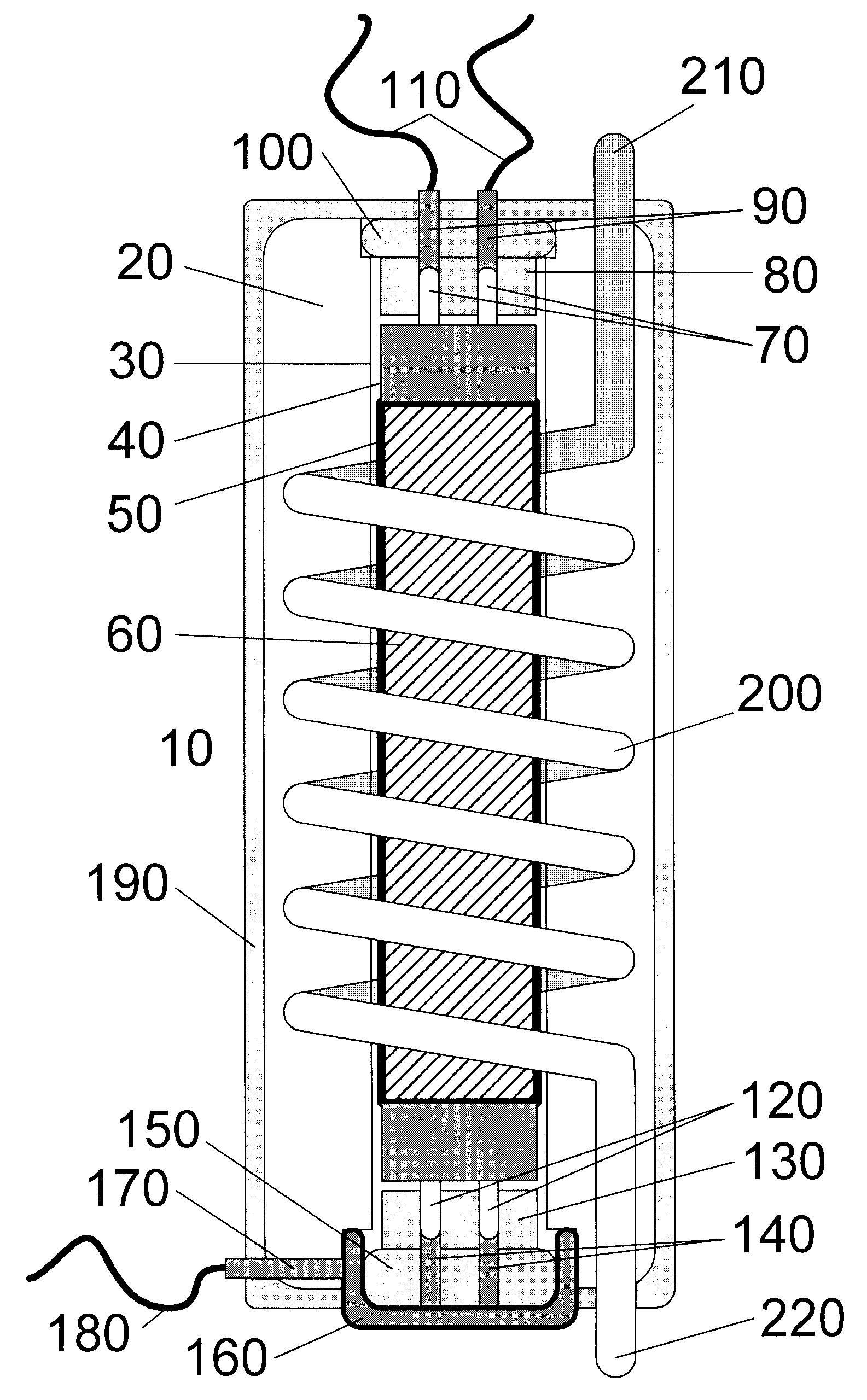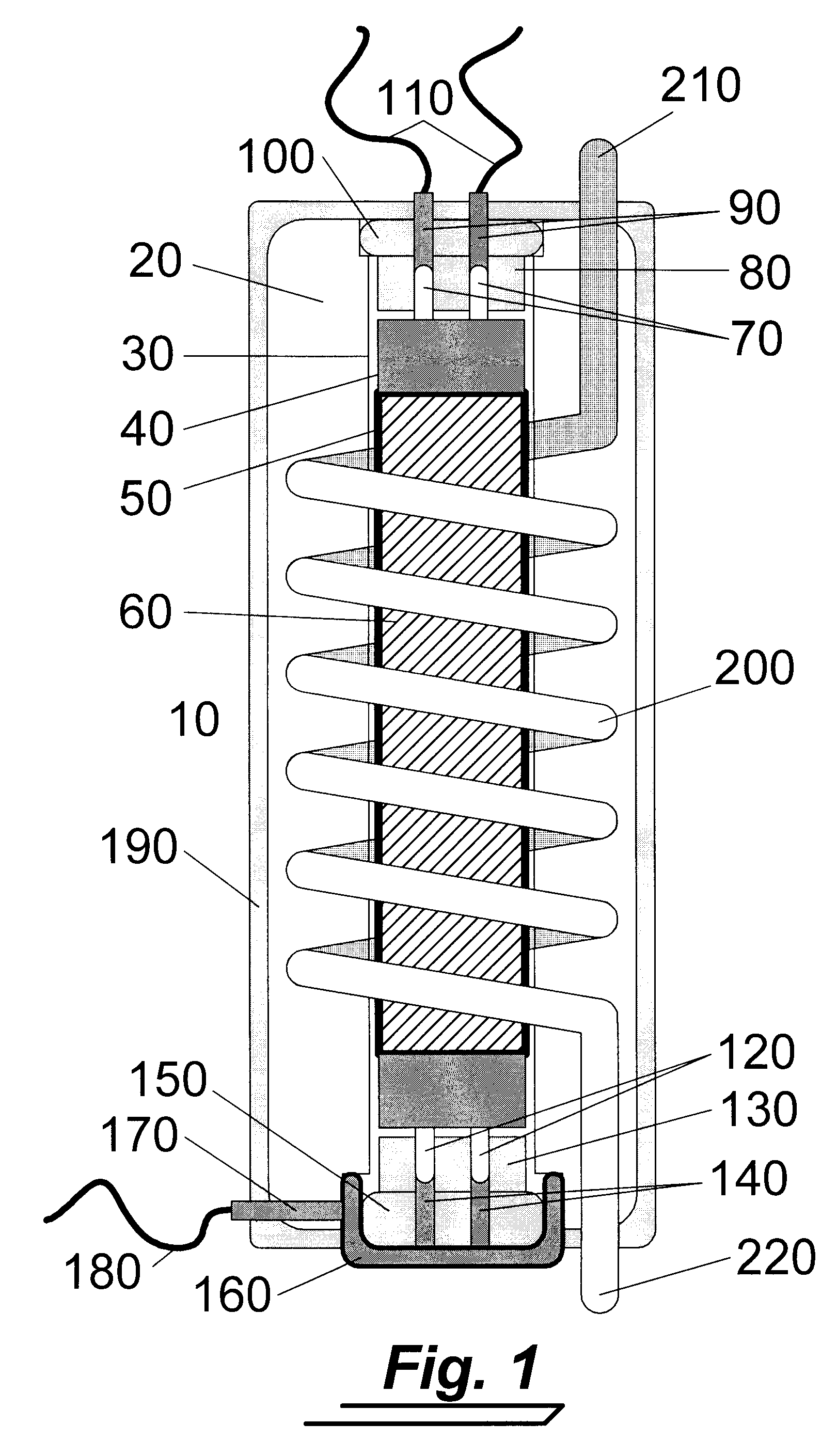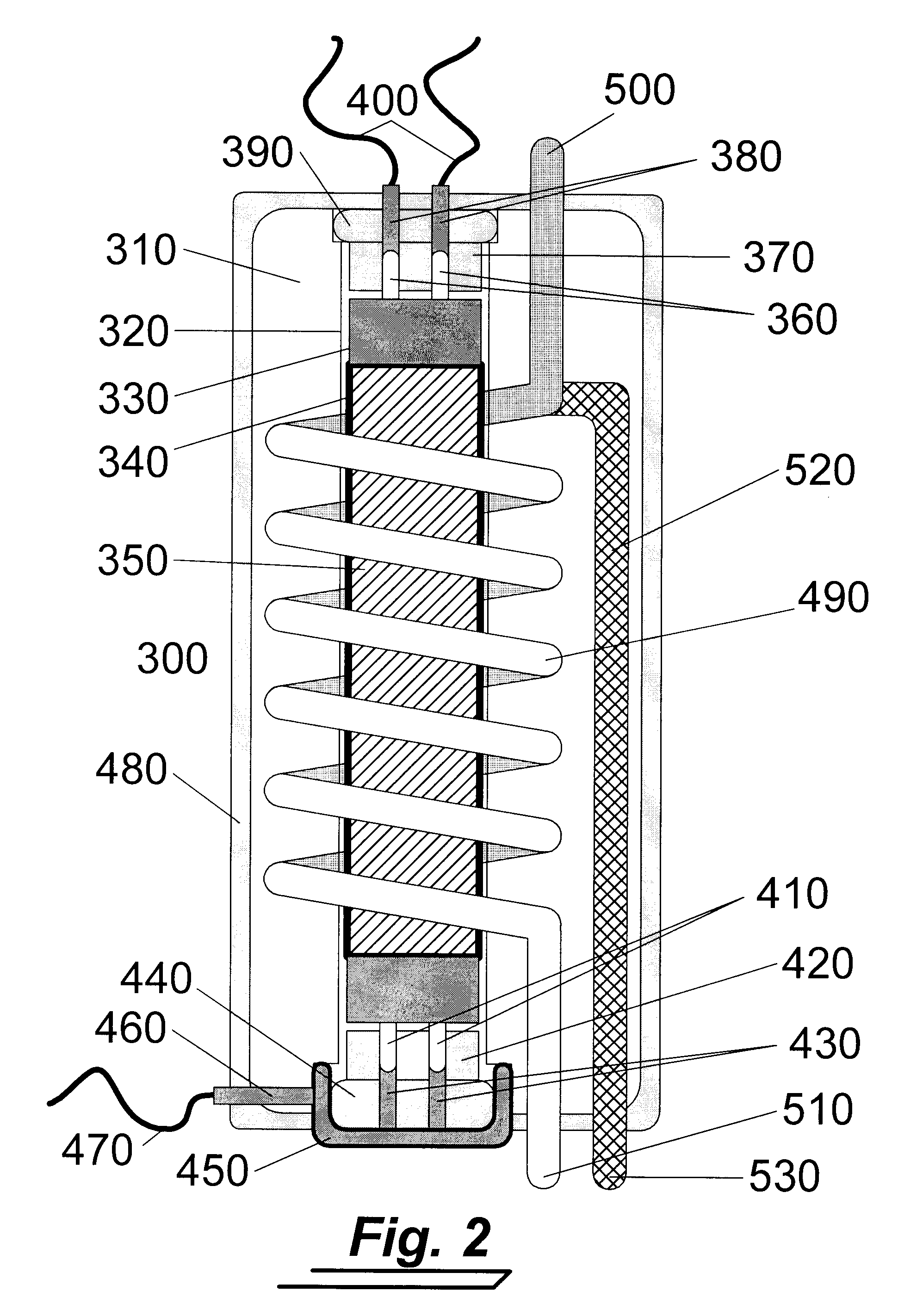Photosterilization Reactor
a technology of photosterilization reactor and reactor body, which is applied in the direction of food preservation, water/sludge/sewage treatment, water treatment parameter control, etc., can solve the problems of incomplete sterilization, low cross-sectional interaction, and inefficient coupling
- Summary
- Abstract
- Description
- Claims
- Application Information
AI Technical Summary
Benefits of technology
Problems solved by technology
Method used
Image
Examples
Embodiment Construction
[0035]For a general understanding of the present invention, reference is made to the drawings. In the drawings, like reference numerals have been used throughout to designate identical elements.
[0036]FIG. 1 shows a photosterilization reactor 10. The photosterilization reactor 10 comprises a reactor body 20 made of suitable ultraviolet (UV-C) light transmissive material (minimum absorbance / maximal transmissivity in the region of 240-260 nm) such as fused silica (quartz), or preferentially of a UV transmissive thermoplastic (e.g., CORNING COSTAR®, ZEON ZEONEX® or ZEONOR®, TORAY RAYTELA®, CYP or the like), which are extensively used in the manufacture of UV transmissive wells and cuvettes for fluoroscopy applications.
[0037]Axially disposed in the center of the reactor body 20 is a tubular channel 30 for holding and constraining a suitable ultraviolet light source, here shown to be a low-pressure long-arc mercury vapor (Hg) lamp 40. Other lamps that provide ultraviolet emissions in the ...
PUM
 Login to View More
Login to View More Abstract
Description
Claims
Application Information
 Login to View More
Login to View More - R&D
- Intellectual Property
- Life Sciences
- Materials
- Tech Scout
- Unparalleled Data Quality
- Higher Quality Content
- 60% Fewer Hallucinations
Browse by: Latest US Patents, China's latest patents, Technical Efficacy Thesaurus, Application Domain, Technology Topic, Popular Technical Reports.
© 2025 PatSnap. All rights reserved.Legal|Privacy policy|Modern Slavery Act Transparency Statement|Sitemap|About US| Contact US: help@patsnap.com



